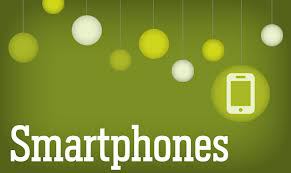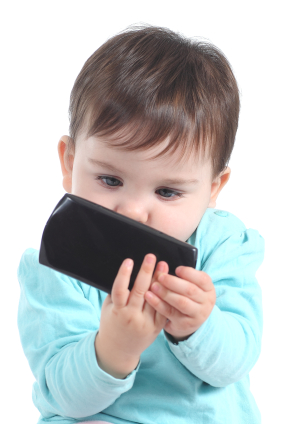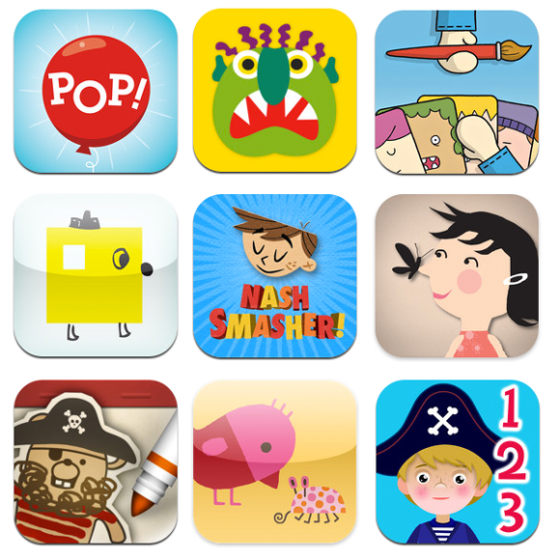Smartphones: Is Your Child Ready For One?

 Once they learn how to grasp objects in their small hands, young children become interested in electronic devices of all types, especially our computers and cellphones. You might not have noticed it, but your 3-5 year old son or daughter could be spending more time on your smart phone than you do.
Once they learn how to grasp objects in their small hands, young children become interested in electronic devices of all types, especially our computers and cellphones. You might not have noticed it, but your 3-5 year old son or daughter could be spending more time on your smart phone than you do.
If this is the case, you might want to consider introducing them to these devices. This article discusses informative tips on how and when to introduce your young children to smart phones:
Let Them Get to Pre-School
Your toddler may like playing with your smartphone’s touch screen, taking pictures, or playing games on your device, but that does not mean they’re ready for them.
Psychoanalysts and learning experts advise parents to wait until their children get to pre-school before introducing them to these devices. This is because children below the age of two years learn best from interactions and real world experiences. As part of their development, it is extremely crucial for children at that age to explore the physical world and use their senses, away from the smartphone screen.
Nevertheless, after they reach age three, most children become regular users of media and they can benefit from those electronic media that contain educational content. Producers of such content normally utilize strategies such as the presentation of sounds and images that capture the attention of the children, the repetition of an idea and the use of child voices rather than adult ones for the voice characters.
Parental Guidance and Supervision
 Between the ages of 4 and 10 years, the use of smartphones still requires a lot of supervision. Experts recommend only those over the age of 10 can own one and start using them in an unsupervised environment. The aim is to give them balanced exposure.
Between the ages of 4 and 10 years, the use of smartphones still requires a lot of supervision. Experts recommend only those over the age of 10 can own one and start using them in an unsupervised environment. The aim is to give them balanced exposure.
Parents can help their children make the most out of their smartphones by sharing in the experiences. For instance, parents can engage with their children as they download new apps and try them out. Children should be encouraged to ask questions and point out various features of the content.
This technique is referred to as “co-viewing” and it can help to improve the child’s comprehension skills. But no matter what they do, parents should not underestimate the power of conventional strategies such as reading books or spending time outdoors with children. The real world will always be the central place where very young kids can and will develop language, social and cognitive skills.
Content for Smartphones
In the current market, you can find a variety of child-friendly content for the smartphone – most app makers have listed the age range for their content. Parents must learn how to differentiate between entertainment-based and educational content and gauge what their children can handle.
 There are numerous apps that teach metric conversion, teach basic math, algebra, money, time, literature and more. These can be very beneficial to children. In addition, there are many interactive activities and games on these devices that are not specifically about school but still are valuable to children.
There are numerous apps that teach metric conversion, teach basic math, algebra, money, time, literature and more. These can be very beneficial to children. In addition, there are many interactive activities and games on these devices that are not specifically about school but still are valuable to children.
For example, activities and games that involve thinking, such as puzzles, memory games and spatial reasoning activities help to improve the child’s brain capacity and creative skills. Others can help to nurture skills in drawing, music and innovation.
Regulate Screen Time
Specialists stipulate smartphone users between 4 and 5 years old must not go beyond 30 minutes per sitting, while those between
6 and 8 years old must not exceed an hour per sitting.
For those in high school, 2 hours ought to be the maximum sitting time, unless the student is using the device for productive purposes other than gaming.
As they grow older and they start to prove they can handle the smart phone on their own, they can be allowed more time on the device.
In the modern world, smartphones give children a new dimension of learning. Through them, school-aged children get a unique learning perspective that goes beyond books and the traditional classroom. They also give students a range of opportunities as students can access more content and engage better with their school curriculum. Moreover, they connect students to the global village and enable them to interact with real world professionals who can solve problems in the physical world in real-time.
The Author
Dana Hastings loves to write about parenting in the 21st century technology. She believes parents can balance their children’s activities and health by practicing wise tips in handling gadgets and tools. Dana also reviews useful products for children and the whole family. In fact, she always write about great finds at Bing Lee.
Image Credit: EducationinAmerica.com






